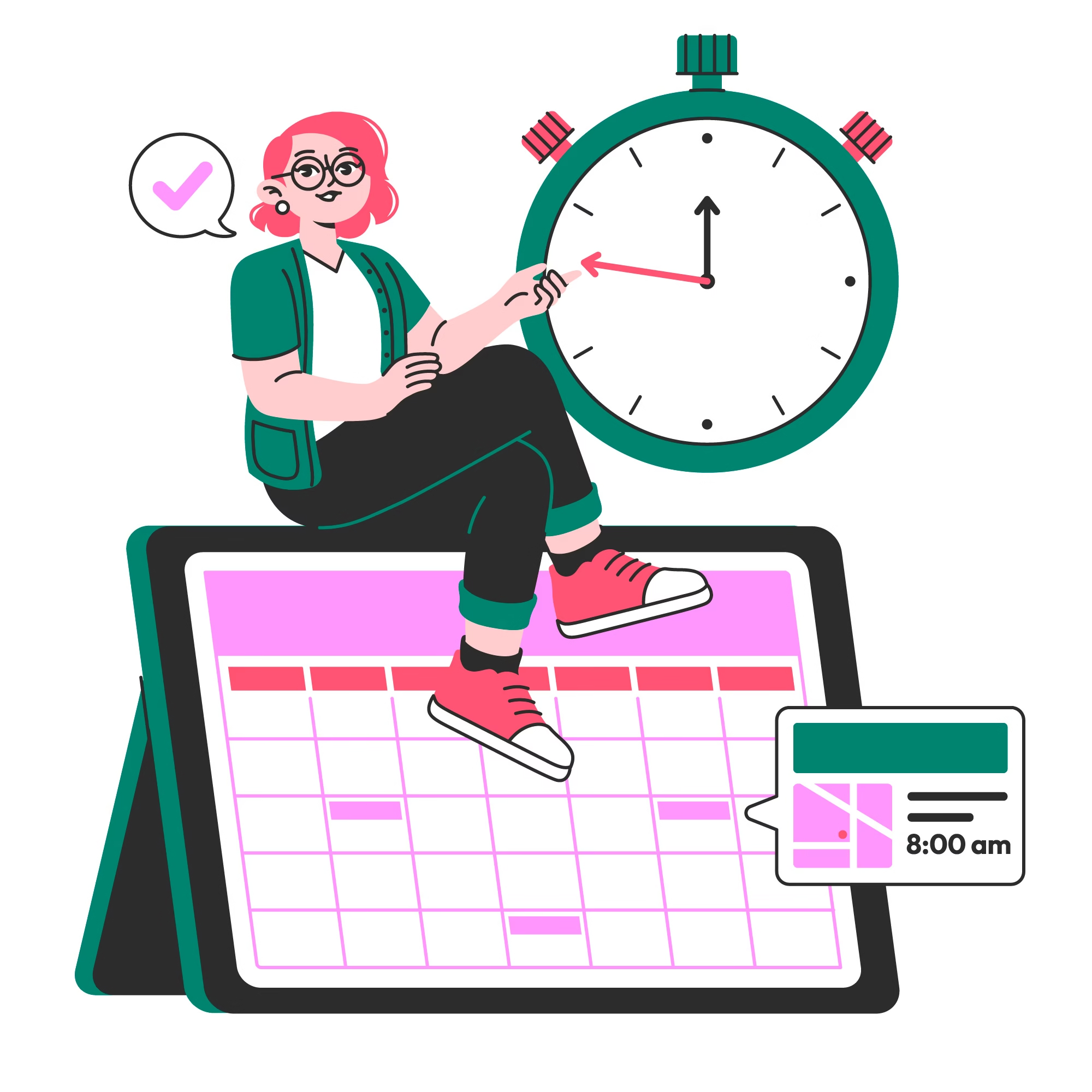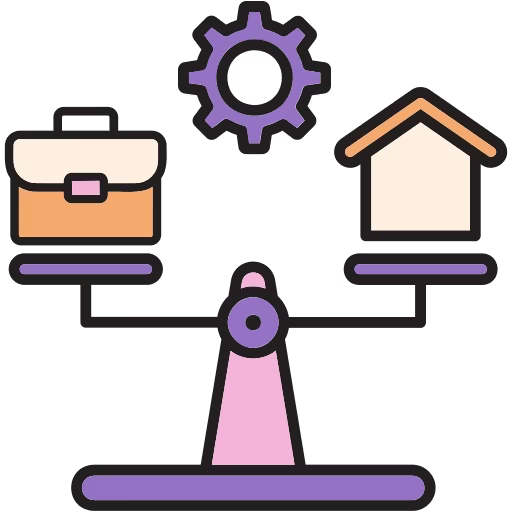
Achieving a healthy work-life balance has never been more difficult in the fast-paced world of today. Many people are finding it difficult to balance their personal and professional life as a result of the growing demands of the job, remote employment, and continual communication. However, long-term success, mental health, and general well-being all depend on maintaining a healthy work-life balance. The significance of work-life balance, doable methods to attain it, and its beneficial effects on your life will all be covered in this blog.
What is Work-Life Balance?
The term “work-life balance” refers to striking a balance between the time and energy spent on professional obligations and personal pursuits; it’s about establishing a harmonious relationship between work and life outside of work, making sure that neither element takes precedence over the other.
A good work-life balance enables people to succeed in their careers while also spending quality time with their families, engaging in hobbies, and taking care of their physical and mental health. Stress, anxiety, and depression are common outcomes of an unbalanced work-life dynamic.
2. Increased Productivity
Contrary to popular belief, working longer hours doesn’t necessarily mean higher productivity. A well-balanced lifestyle enhances focus, creativity, and efficiency at work.
Spending quality time with loved ones strengthens relationships and fosters emotional well-being. Neglecting personal life for work can lead to strained relationships and feelings of isolation.
4. Better Physical Health
Overworking often leads to neglecting physical health, resulting in issues like fatigue, poor sleep, and a weakened immune system. A balanced lifestyle encourages regular exercise, healthy eating, and adequate rest.
Employees who feel they have a good work-life balance are more likely to be satisfied with their jobs, leading to higher retention rates and lower turnover for employers.
Warning Signs of an Unbalanced Work-Life

Understanding the warning signs of a poor work-life balance is crucial before moving on to solutions. These consist of:
- Feeling overburdened or anxious all the time
- Ignoring hobbies and personal connections
- Working long hours without enough breaks
- Having physical symptoms such as headaches, exhaustion, or insomnia
- Feeling bad about not working
It’s important to emphasise balance and take action if you recognise any of these symptoms.
Obstacles in Professions with High Stress
1. Long and Unusual Hours: A lot of professionals work long shifts, stay up late, or are always on call, which interferes with their personal time and sleep.
2. Emotional and Mental Exhaustion: IT professionals must constantly solve problems and meet deadlines, while customer service representatives must deal with irate customers.
3. The need to be “always on”: This might make it difficult to distinguish between work and personal life.
4. The stigma associated with asking for help is a major reason why many professionals are reluctant to talk about mental health issues or seek assistance.
5.Limited Time for Self-Care: Exhausting jobs frequently leave little time for hobbies, relaxation, or exercise.
How to Balance Work and Life: Useful Techniques
1. Establish Unambiguous Boundaries
- Establish and adhere to specific work hours. Steer clear of taking business calls or checking emails after these hours.
- To keep business and personal life apart, set up a specific area at home for work.
- Sort tasks according to significance and urgency using tools like productivity apps or to-do lists.
- Assign or do away with low-priority duties to concentrate on high-impact activities.
3. Develop Your Ability to Say No
- Burnout can result from overcommitting to social or professional commitments.
- Refuse requests that don’t fit your priorities in a polite manner.
4. Take Regular Breaks

- To rejuvenate, schedule brief breaks during the workday. Methods such as the Pomodoro Technique (The Pomodoro Technique is a time management strategy that involves working intently for 25-minute bursts, or “pomodoros,” and then taking a 5-minute rest.) can support sustained concentration and output.
5. Set Up Personal Time
- Do not compromise on personal time.
- Plan hobbies, family time, and physical activity in the same way that you would meetings at work.
6. Make Use of Technology Sensibly
- Utilize technology to increase productivity and streamline processes, but don’t allow it to take over your life.
- Establish limits on social media and screen time.
7. Engage in Self-Care
- Give top priority to pursuits that enhance mental and physical health, like meditation, exercise, and getting enough sleep.
8. Get in Touch with Your Employer
- Talk openly with your employer about modifying your workload or looking into flexible work arrangements if work expectations are becoming too much for you.
9. Outsource and Delegate
- To free up time for more important activities, assign work-related tasks to others and contract out personal duties like housework or errands.
10. Take Stock and Make Adjustments
- Evaluate your work-life balance on a regular basis and adapt as necessary. Be adaptable since what works today might not work tomorrow.
Customised Advice for Professions With High Stress
For First Responders, Police Officers, and Physicians –
- Plan Regular Breaks: Take brief breaks to relax and rejuvenate, even during hectic shifts.
- Seek Peer Support: Talk to coworkers who are aware of the particular difficulties in your line of work.
- Proponent of Systemic Change: Encourage the implementation of work-life balance-promoting workplace rules, such as flexible scheduling or mental health days.
For Customer Care Representatives-
- Set Emotional Boundaries: Create plans to deal with challenging clients without getting upset.
- Use Scripts and Templates: To lessen mental strain, simplify answers to frequently asked questions.
- Take a look at these micro-breaks: You may clear your head by taking even five minutes off in between calls.
For IT professionals –
- Set aside time on your calendar for unbroken personal activity.
- Delegate: Team members should share responsibility to prevent burnout.
- Employing monitoring tools is advised. Put in place mechanisms that only notify you of serious problems, so you don’t have to check them frequently.
FAQs About Work-Life Balance
How can someone with a demanding profession manage their work and personal lives?
Establish clear boundaries, prioritise your work, and discuss your demands with your employer first. A tremendous effect can be made with even minor adjustments.
Is everyone’s work-life balance equal?
No, each person’s definition of work-life balance is unique. It is contingent upon personal circumstances, professional aspirations, and priorities.
Is it possible to enhance work-life balance using technology?
In order to prevent overworking, it is crucial to utilise technology carefully and establish boundaries, even though it might simplify chores and increase efficiency.
How can I tell if I’ve found work-life balance?
Both your personal and professional lives will be filled with fulfilment, stress-free, and a healthy routine.
How can I proceed if my company opposes work-life balance?
Think about having an honest discussion with your manager or looking into other employment options that share your values if balance is not valued in your working culture.
Final Thoughts
The pursuit of work-life balance is a continuous process that calls for care and attention. Start by putting one or two of the tactics in this guide into practice right now. Setting limits, putting self-care first, or getting help are all examples of how little actions may have a big impact.
Please leave your comments below with your thoughts: Which techniques have you found to be effective in attaining work-life balance? Let’s encourage and help one another to live more contented and balanced lives!

G8
Thank you for your kind words 🙂